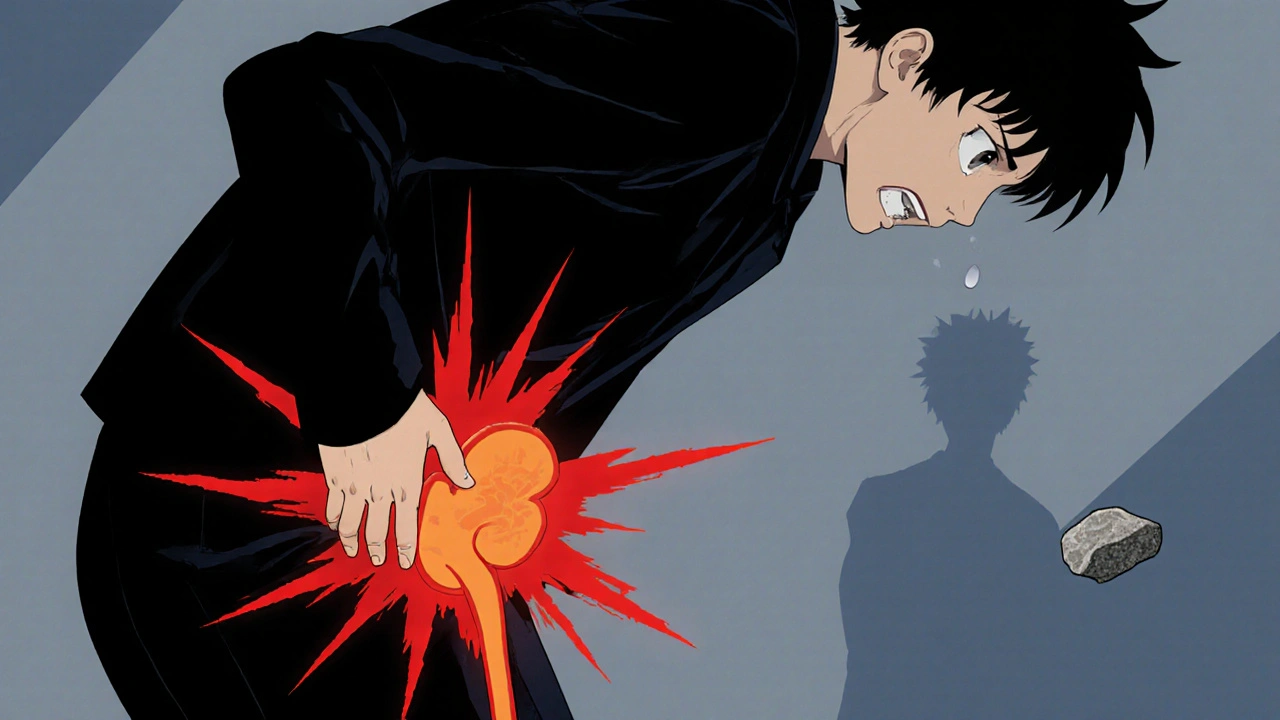Kidney Stone Symptoms: What to Watch For and When to Act
When you feel a sudden, intense pain in your side or back that doesn’t go away, it might not be a pulled muscle—it could be a kidney stone, a hard deposit of minerals and salts that forms inside the kidneys and can block urine flow. Also known as renal calculi, these stones can move into the ureter and trigger some of the most painful experiences a person can have. Many people don’t realize they have one until it starts to shift, and by then, the symptoms are impossible to ignore.
The most common sign is pain that starts in your lower back or side and radiates to your lower abdomen or groin. It doesn’t come and go like a cramp—it comes in waves, sometimes so bad you can’t sit still. Along with that, you might notice blood in your urine, which can make it look pink, red, or brown. Cloudy or foul-smelling urine is another red flag, often linked to infection. Some people feel a constant urge to pee, even if only a few drops come out. Nausea and vomiting often come with the pain, and fever or chills mean the stone might be causing an infection, which needs urgent care.
Kidney stones aren’t just about pain—they’re tied to what you drink, what you eat, and even your genetics. If you’ve had one before, you’re more likely to get another. Dehydration is the biggest trigger, but high-salt diets, too much animal protein, and certain medical conditions like gout or hyperparathyroidism also raise your risk. You don’t need to be a health expert to reduce your chances: drink more water, cut back on processed foods, and watch your sodium intake. These simple steps can make a real difference.
The posts below cover real-world experiences and medical insights on kidney stones—from how to tell if it’s a stone or something else, to what treatments actually work and what to avoid. You’ll find comparisons of pain relief options, advice on passing stones at home, and when to head to the ER. Whether you’re dealing with symptoms right now or just want to prevent them, this collection gives you the facts without the fluff.

Why Early Detection and Prompt Treatment Matter for Kidney Stones
Early detection of kidney stones reduces pain, costs, and complications. Learn symptoms, diagnostics, treatment options and prevention tips to stay stone‑free.
